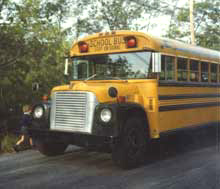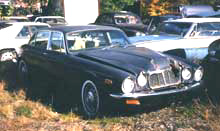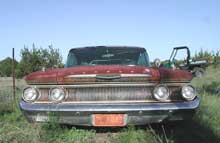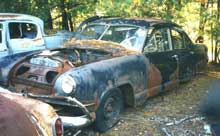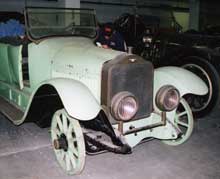School Days
School opened in our town today. Twenty-four years ago, my son Nick set off for his first day of school. After a hearty breakfast, seen off by his mother and younger sister, he boarded Bus 19, a big yellow International.
I remember my first school bus, too. As it happened, it was a Plymouth station wagon, called into service because our only town bus, a 36-passenger Mack, was too small for the student body of booming babies. No pictures of the Mack survive, but it had the familiar 1940s nose and a streamlined body similar to this one that languishes in the woods in a neighboring northwest Connecticut town. From the interior configuration I think it's a 1940-47 Ford.
No other town had a Mack bus; most had Chevys and GMCs, like the buses that replaced our Mack, and a few Dodges. By sixth grade, I rode a spiffy Thomas-bodied Ford like this one, still later a Wayne-bodied International. The bus contractor in nearby Canaan always insisted on White chassis, and my high school had a Reo, used mostly for athletic events and field trips.
Many years later I was intrigued to encounter the Crown Coach, the popular California transit-type school bus with underfloor engine. We had nothing like that in the east, although the Amtran Genesis, with International chassis, and Blue Bird flat-front have been gaining some traction here. Our town still uses conventional Internationals, though, as far as the eye can see. They're probably on the road as you read this. If you like school buses, you'll find plenty to enjoy at School Bus Explorer and Josh's School Bus Gallery.
Nick's first day of school was a great success. When his sister Harriet welcomed him home, he was anxious to tell all about his adventures. He still is. He'll turn 30 next spring and is still studying - for his PhD in neuroscience.

